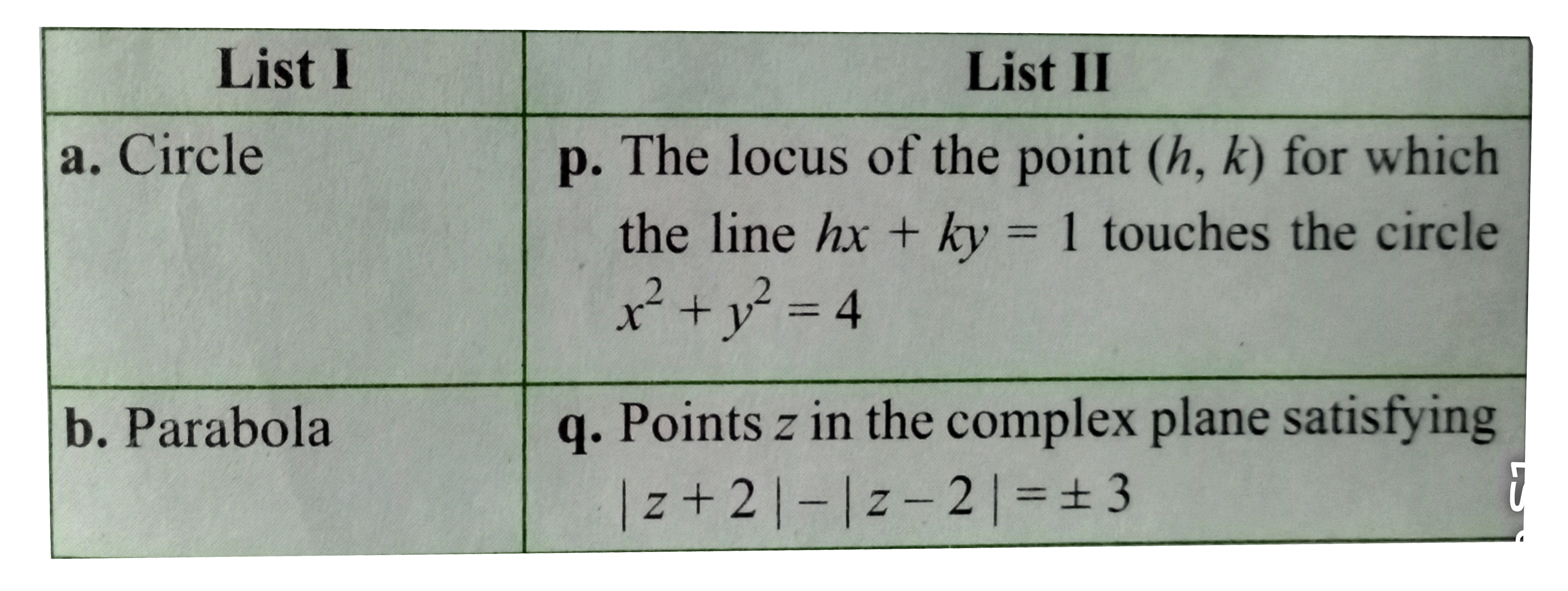MULTIPLE CORRECT ANSWER TYPE from CENGAGE MATHS (ENGLISH) COMPLEX NUMBERS for Class 12
| Class 12 | MATHS |
| Chapter | COMPLEX NUMBERS |
| CENGAGE MATHS (ENGLISH) | MULTIPLE CORRECT ANSWER TYPE |
| Medium | English |
| Academic Year | 2023-2024 |
Question 8
For a non-zero complex number z , let arg(z) denote the principal argument with −π<arg(z)≤π Then, which of the following statement(s) is (are) FALSE? arg(−1,−i)=π4, where i=√−1 (b) The function f:R→(−π,π], defined by f(t)=arg(−1+it) for all t∈R , is continuous at all points of R , where i=√−1 (c) For any two non-zero complex numbers z1 and z2 , arg(z1z2)−arg(z1)+arg(z2) is an integer multiple of 2π (d) For any three given distinct complex numbers z1 , z2 and z3 , the locus of the point z satisfying the condition arg((z−z1)(z2−z3)(z−z3)(z2−z1))=π , lies on a straight lineView SolutionQuestion 9
Let s, t, r be non-zero complex numbers and L be the set of solutions z=x+iy (x, y∈R, i=√−1) of the equation sz+tz+r=0 , where z=x−iy . Then, which of the following statement(s) is (are) TRUE? If L has exactly one element, then |s|≠|t| (b) If |s|=|t| , then L has infinitely many elements (c) The number of elements in Lnn{z|z−1+i∣=5} is at most 2 (d) If L has more than one element, then L has infinitely many elementsView Solution
All Exercises from CENGAGE MATHS (ENGLISH) Class 12 MATHS COMPLEX NUMBERS
- COMPREHENSION
- EXERCISE3.1
- MATCHING COLUMN
- MULTIPLE CORRECT ANSWER
- SINGLE CORRECT ANSWER
- EXERCISE3.2
- EXERCISE3.3
- EXERCISE3.4
- EXERCISE3.5
- EXERCISE3.6
- EXERCISE3.7
- EXERCISE3.8
- EXERCISE3.9
- EXERCISE3.10
- EXERCISE3.11
- SINGLE CORRECT ANSWER TYPE
- MULTIPLE CORRECT ANSWERS TYPE
- LINKED COMPREHENSION TYPE
- MATRIX MATCH TYPE
- NUMERICAL VALUE TYPES
- ARCHIVES (SINGLE CORRECT ANSWER TYPE )
- MULTIPLE CORRECT ANSWER TYPE
- ILLUSTRATION
- SLOVED EXAMPLES



